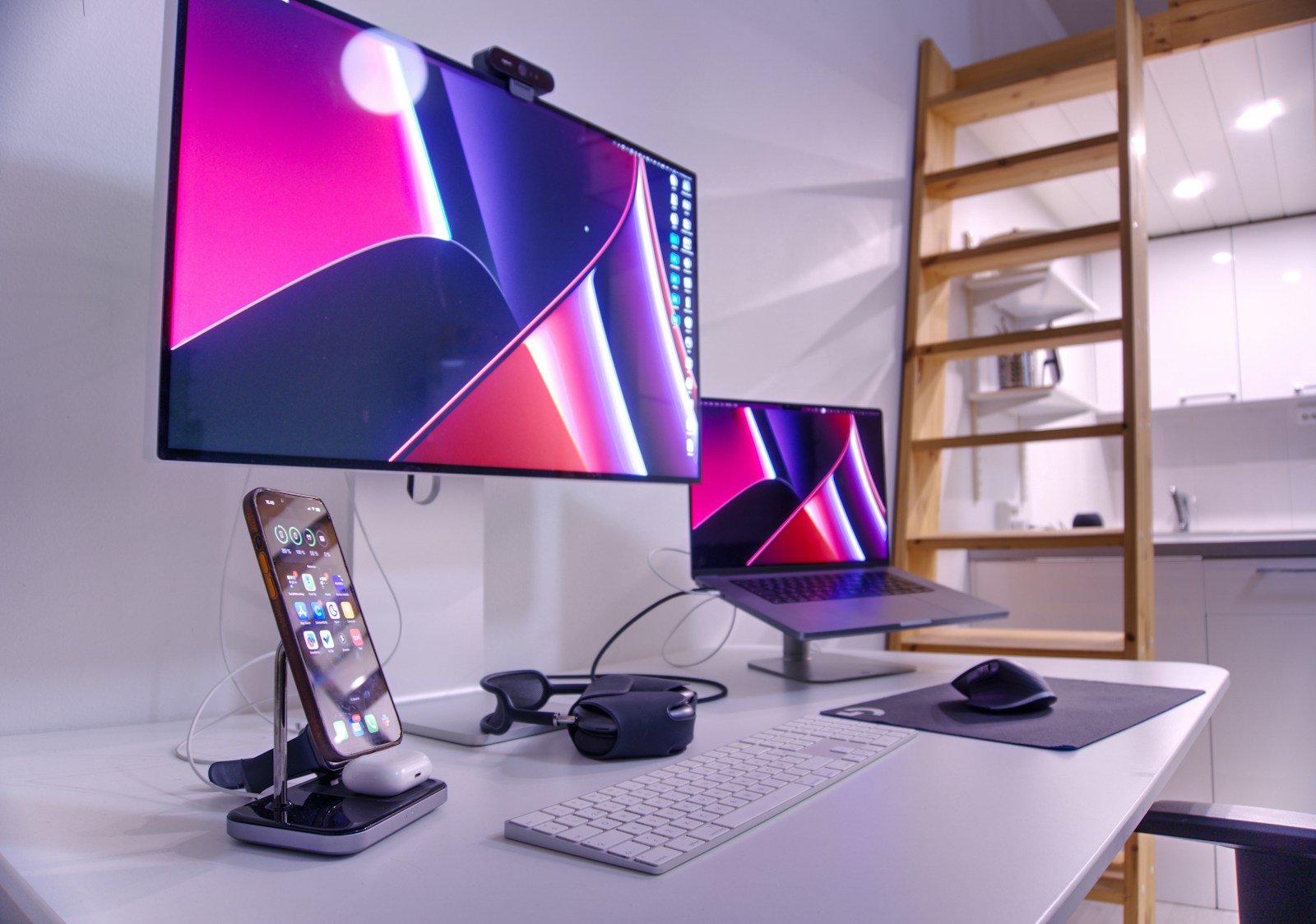Transferring data from an iPhone to a computer can feel complex, but it’s a straightforward process once you know the steps. Whether to back up photos, videos, or other important files, moving content from your iPhone to a computer ensures the safety and accessibility of your digital memories or documents. With a variety of methods available, users can choose between wireless transfer, using cloud services, or a direct connection using a USB cable.
Before starting, users must prepare their devices for transfer. It’s crucial to have the latest version of iTunes installed on the computer if opting for a wired transfer. For wireless methods, ensuring both devices are on the same Wi-Fi network is essential. Additionally, the user must unlock the iPhone and, if asked, give the computer permission to access the phone’s data.
Once set up, the user can transfer files through different pathways. Methods like AirDrop or iCloud offer wireless convenience, while a USB connection provides a fast and secure way to directly move data to a computer’s local storage. Whatever method chosen, the user can manage where contents are saved and what specific files are transferred, offering them full control over the process.
Download iPhone to a Computer: Quick Data Transfer Guide
Whether you want to back up your photos, transfer videos, or move important files, connecting your iPhone to a computer is simple and secure. This guide walks you through how to download data from your iPhone to a Windows PC or Mac using both wired and wireless methods.
1. Why Transfer Files from iPhone to Computer?
Transferring data from your iPhone to a computer helps you:
- 🧠 Free up storage on your iPhone.
- 💾 Create backups of important photos, videos, and documents.
- 🖥️ Edit or organize files more easily on a larger screen.
- 🔐 Protect your data from accidental loss or device damage.
2. What You’ll Need
Before you start, make sure you have:
- A Lightning-to-USB or USB-C cable (depending on your iPhone model).
- The latest version of iTunes (for Windows) or Finder (for macOS Catalina and later).
- Optionally, a Wi-Fi connection if you prefer wireless transfer.
3. Method 1: Transfer Files Using a USB Cable
For Windows PCs
- Connect your iPhone to your PC using a USB cable.
- When prompted, tap “Trust This Computer” on your iPhone and enter your passcode.
- Open File Explorer → select This PC → choose your iPhone under “Devices and Drives.”
- Open the DCIM folder to access your photos and videos.
- Copy and paste the files to your desired folder on your PC.
💡 Tip: For a more complete backup (including contacts, messages, and app data), use iTunes.
- Open iTunes → click your device icon → choose Back Up Now.
(Source: SolveYourTech Guide)
For Mac Computers
- Connect your iPhone to your Mac via cable.
- Open Finder (macOS Catalina or later).
- Select your iPhone from the sidebar.
- Choose the Files tab to see which apps support file sharing.
- Drag and drop files between your iPhone and Mac.
If you’re using macOS Mojave or earlier, use iTunes instead of Finder.
(Source: Apple Support)
4. Method 2: Transfer Files Wirelessly (iCloud or Wi-Fi)
Option 1: iCloud Drive
- On your iPhone, go to Settings → [your name] → iCloud → iCloud Drive and enable it.
- Upload files from supported apps (like Files or Photos).
- On your computer, visit iCloud.com or open iCloud Drive (if installed).
- Download your files to your PC or Mac.
Option 2: Wi-Fi Sync (via iTunes or Finder)
- Connect your iPhone to your computer once using a cable.
- In Finder (Mac) or iTunes (Windows), enable “Sync with this iPhone over Wi-Fi.”
- Once set up, your iPhone will sync automatically when both devices are on the same Wi-Fi network.
(Source: Wide Angle Software Guide)
5. Method 3: Use Third-Party Apps or Cloud Services
If you prefer more flexibility, you can use third-party tools such as:
- Google Drive / Dropbox / OneDrive – Upload files from your iPhone and download them on your computer.
- AirDrop (Mac only) – Instantly share photos, videos, and documents between Apple devices.
- File Transfer Apps like iMazing, TouchCopy, or AnyTrans for advanced file management.
(Source: iMyPass Guide)
6. Troubleshooting Tips
- iPhone not showing up on PC?
- Reconnect the cable or try a different USB port.
- Make sure you’ve tapped “Trust This Computer.”
- Update your iTunes or Apple Mobile Device Driver.
- Files not transferring?
- Restart both your iPhone and computer.
- Check iCloud sync settings if using wireless transfer.
7. Final Thoughts
Transferring files from your iPhone to a computer doesn’t have to be complicated. Whether you prefer a quick USB connection or the convenience of iCloud, Apple provides multiple ways to move your data safely and efficiently.
Choose the method that best fits your workflow — and enjoy seamless access to your photos, videos, and documents across all your devices.
Sources:
- Apple Support – Transfer Files Between iPhone and Other Devices
- SolveYourTech – How to Transfer Files from iPhone to PC
- Wide Angle Software – How to Transfer Files from iPhone to PC
- iMyPass – Transfer Files Between iPhone & PC
Key Takeaways
- Transferring files happens through USB, wireless means, or cloud services.
- Devices must be compatible and permissions granted to start transfers.
- Choose the preferred method and control where and what files to transfer.
Preparing Your iPhone and Computer for Transfer
Before transferring files from your iPhone to a computer, ensure both devices are ready for a smooth process.
Establishing Connection Between iPhone and PC/Mac
Start by getting a USB cable, typically a Lightning cable for iPhones. Connect one end to your iPhone and the other to the PC or Mac’s USB port. For a wireless transfer, confirm that both the iPhone and computer have Wi-Fi and Bluetooth turned on. Your iPhone should be unlocked and, if prompted, choose to ‘trust this computer’. This permits the devices to communicate securely.
Configuring iPhone Transfer Settings
On your iPhone, check that you are signed in with your Apple ID, which can be done through the device’s settings under ‘Sign in to your iPhone‘. This is crucial especially if you want to use services like iCloud for transferring files. Also, under the same settings section, ensure that the iPhone has the latest version of iOS for compatibility and that file sharing is enabled.
Transferring Data from iPhone to Computer
Transferring data from an iPhone to a computer can involve images and videos, contacts, and calendars. It can also be done wirelessly through iCloud. The process requires a few steps and the use of native apps like Photos and Finder or iTunes on Windows.
Using the Photos App for Image and Video Transfer
To move images and videos to your computer, you can use the Photos app. First, connect your iPhone to the computer with a USB cable. If it’s your first time connecting to a PC, tap ‘Trust’ on your iPhone. Open the Photos app on your computer. Click ‘Import’ and choose ‘From a USB device’. You can then select which items to transfer.
Synchronizing Contacts and Calendars
To sync contacts and calendars, iTunes or Finder on a Mac is your go-to. Connect your iPhone to your computer. Open iTunes on Windows or Finder on a Mac. In iTunes select your device and choose the ‘Info’ tab. Check ‘Sync Contacts’ or ‘Sync Calendars’ and choose the groups you want to add to your computer.
Leveraging iCloud for Wireless Transfer
iCloud allows for wireless transfer of various forms of data like photos and contacts. To use iCloud, ensure your iPhone and computer are connected to WiFi. Turn on iCloud Photos on your iPhone by going to Settings > [your name] > iCloud > Photos. On Windows, download and install iCloud for Windows. Sign in with your Apple ID and select the features you want to sync.







